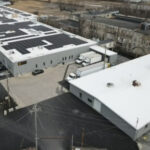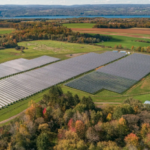Utility rate design is a hot topic. Energy industry trade publications have published a countless number of articles, Op-Ed’s and whitepapers on the issue this year. And it’s pretty much a given that any energy conference these days will have a panel on the topic. Whatever the forum, the subject of rate design always seems to stir up debate. Utilities, ratepayers, and renewable energy advocates often times have widely differing opinions on what makes for fair rate design. In the last few months alone there have been three separate “best practices manuals” on how to design rates for distributed generation:
- Rate Design for a Distributed Grid, by a coalition of solar parties, including: SEIA, Vote Solar, TASC, CalSEIA, SolarCity
- Distributed Energy Management Compensation Manual, by National Association of Regulatory Utility Commissions (NARUC)
- Primer on Rate Design for Residential Distributed Generation, by Edison Electric Institute (EEI)
But what’s really remarkable is that rate design is now becoming a mainstream issue. Major newspapers and media outlets all over the country have been reporting on the topic. A lot of the media coverage has focused on how utility rate changes are impacting the economics of solar projects. This is especially true in high penetration solar states like California, Nevada and Hawaii, where rates and Net Metering frameworks are undergoing fundamental changes. The New York Times ran a piece last week titled Why Home Solar Panels No Longer Pay in Some States. The article discusses the difficult job that regulators face in designing rates that are fair for all stakeholders, knowing that any changes they make will have consequences.
The increased mainstream media attention is creating a more informed public. More information is being disseminated to potential solar customers in particular. Solar developers that I talk to all over the country are saying that rate design is coming up much more often in their conversations with customers. These more educated customers are asking tougher questions: “What type of rate or Net Metering changes are expected over the next 5 to 10 years?” “Do I get any grandfathering protections if I go solar now?” “How will rate/NEM changes affect my savings and project economics?” “Will moving to time-of-use pricing be a good or bad thing for me if I go solar?”
I think that this trend will continue: there will be more media coverage, leading to more customer education, leading to more questions. Prudent solar developers realize this and are preemptively discussing these issues with customers during the sales process. They are providing information that clearly explains upcoming policy changes, how they work, and what these changes mean. Astute developers are also leveraging great software to make sense of future rate changes and the effect they have on the economics of a project.
We published a blog back in 2014 titled Rate Design Will Be King, arguing that rates will be the key factor in determining the economic viability of distributed energy resource projects. Now there’s more evidence than ever to bolster that prediction.



